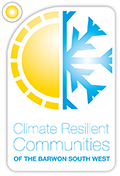Blue Carbon
Saltmarsh, mangroves, and seagrass meadows are collectively known as “Blue Carbon” habitats. Blue carbon habitats have recently been identified as one of the most effective carbon sinks on the planet. Such habitats can bury carbon at a rate 35-57 times faster than tropical rainforests and can store carbon for thousands of years. These features make vegetated coastal habitats ideal candidates for carbon offset programs and nature-based climate mitigation initiatives. Other benefits of blue carbon habitats include;
- They can sequester nearly equivalent quantities of organic carbon as their terrestrial counterparts, in spite of their comparatively limited biomass (0.05% of terrestrial plant biomass).
- They can store organic carbon at almost 40 times the rate of terrestrial systems, largely due to their relatively anaerobic soils preventing organic carbon remineralisation and therefore promoting long-term sequestration.
- Carbon in blue carbon habitats may be stored for centuries to millennia.
- Blue carbon habitats can both produce and store their own carbon, but also trap carbon produced from other locations.
- Their ability to trap particles and suspended sediment means that they may appropriate large quantities of carbon that originates from adjacent habitats, both terrestrial and marine. This is of particular importance in the Corangamite region where a majority of waterways filter through coastal saltmarsh before entering the sea.
While blue carbon habitats are excellent at accumulating carbon, degradation and loss of vegetated coastal habitats via mismanagement could shift them from carbon sinks to carbon sources, releasing atmospheric CO2 equivalent to annual damages of US$6 to 42 billion globally. Examples of impacts include land clearing, changes to tidal influences and stock grazing. The region is fortunate in that many of its original areas of blue carbon habitat are secure with a large majority of what remains being managed for conservation purposes, i.e. within a reserve system and/or being managed through incentives by the Corangamite CMA. However, with projected changes in sea level rise and competing use for land development, many of these areas are now vulnerable.
In addition to their important role in carbon sequestration, blue carbon habitats are also worth trillions of dollars annually through the range of ecosystem services they provide. They can serve as nursery habitat for many fish species and play a critical role in shoreline stabilisation, which is increasingly important with respect to sea-level rise and extreme weather events associated with climate change (i.e. storm surges).
In 2014, the Corangamite and Glenelg-Hopkins CMAs identified a lack of information on the distribution and abundance of blue carbon within the south-west. Such information is critical for guiding the spatial prioritisation of conservation efforts. To address this knowledge gap, the CMAs commissioned researchers from Deakin University to conduct the region’s first blue carbon stock assessment, focussing on sedimentary organic carbon.
The major findings of this program were:
- The region has an estimated total blue carbon sediment stock of 431,502.02 Mg and a total carbon value of $6,472,530 over the top 30 cm of sediment at $15 Mg-1 (voluntary market price). It should be noted that because current sampling was confined to the top 30 cm of sediment, the carbon estimates given here are highly conservative. In fact, since organic carbon is stored at depths up to several metres, the true value of these habitats is even greater.
- The average soil carbon content is 4.96%, and 64.24 Mg Corg ha-1 (over the top 30 cm).
- The region’s carbon stock is comprised mostly of saltmarsh (62%) and seagrass (37%), with mangroves contributing < 1%, in spite of their high carbon stocks, due to their limited distribution.
- Saltmarsh habitats comprised almost half of the vegetated coastal habitat samples in the region and were found to have high carbon stocks, with exceptionally high values recorded at Aireys Inlet, Breamlea, Lake Connewarre, Hospital Swamp, Indented Head and Swan Bay.
- Higher carbon stocks were found in estuaries (or closer to fluvial inputs).
Deakin University identified a number of areas that should be prioritised for conservation because of their notably high carbon stocks. This included areas of saltmarsh in Breamlea, Lake Connewarre and both saltmarsh and seagrass in Swan Bay. These locations currently represent varying levels of protection for saltmarsh. Further, the trends identified in blue carbon soil stocks and carbon heat maps, provide valuable insight for identifying appropriate locations for revegetation, and potentially, carbon offset programs.
Other recommendations included exploring opportunities for blue carbon offset projects. These can be implemented through strategic preservation e.g. through additional fencing, or restoration of former blue carbon habitats e.g. bund/dyke wall removals and through management of catchment-level processes to enhance blue carbon sequestration within existing habitats e.g. restore natural hydrology. As well as carbon enhancement, there would also be other environmental benefits to those mentioned above.
Figure 1: Carbon heat map for Barwon River Estuary. Blue carbon values represent tonnes of organic carbon stored in the top 30cm of the soil in seagrass, mangrove, and saltmarsh habitat areas.








